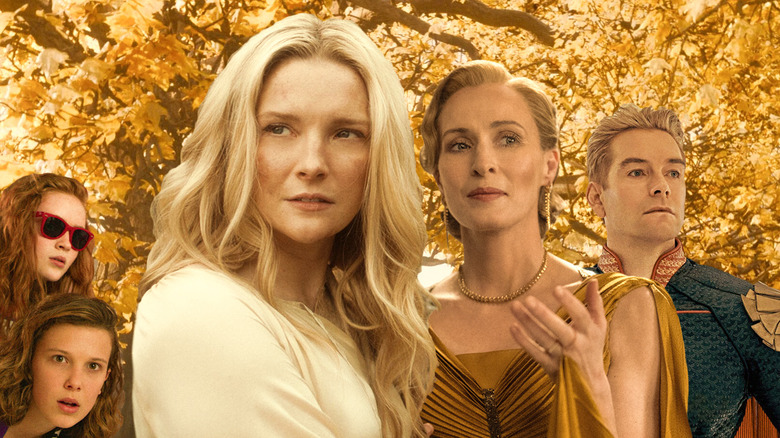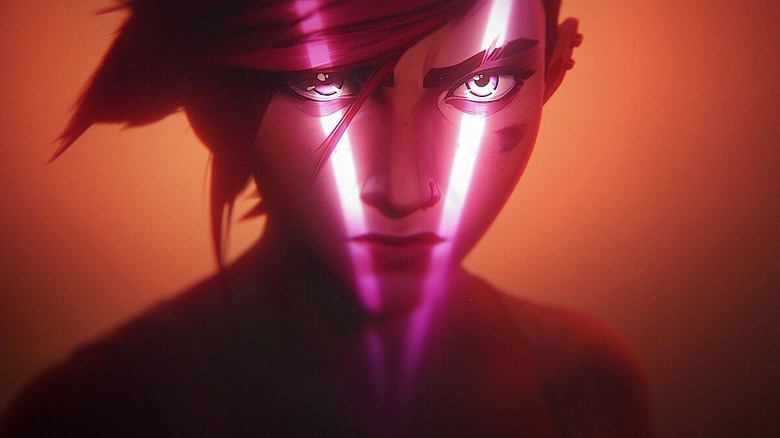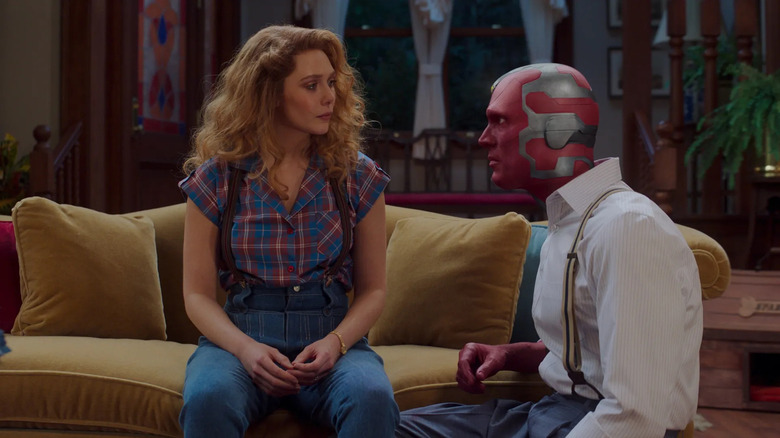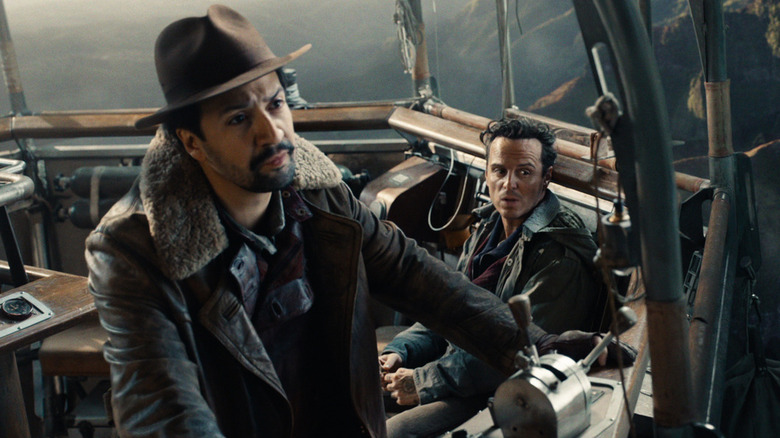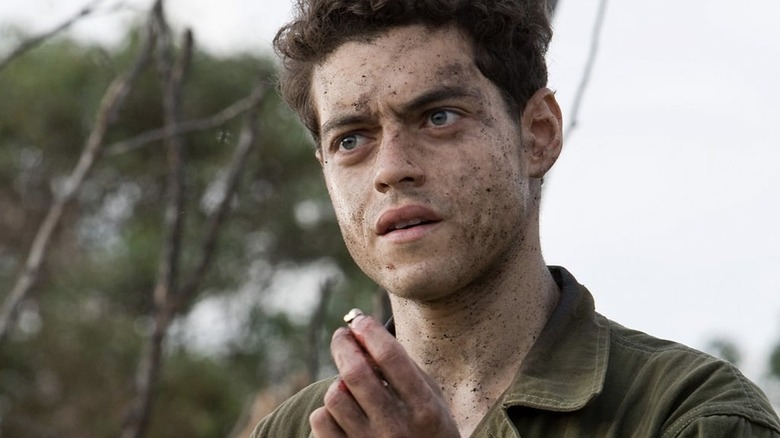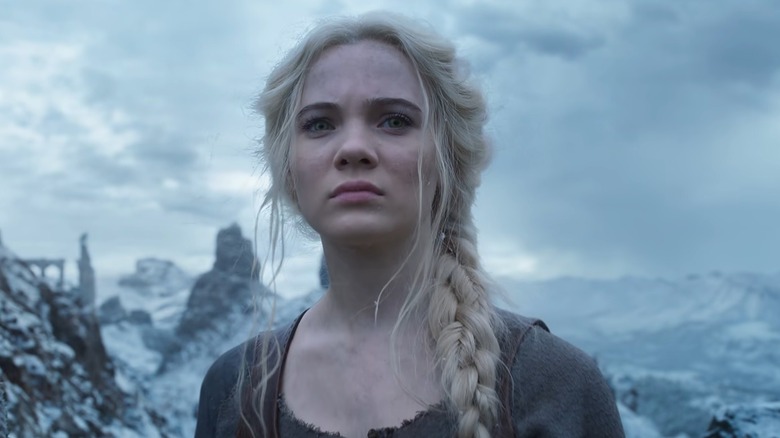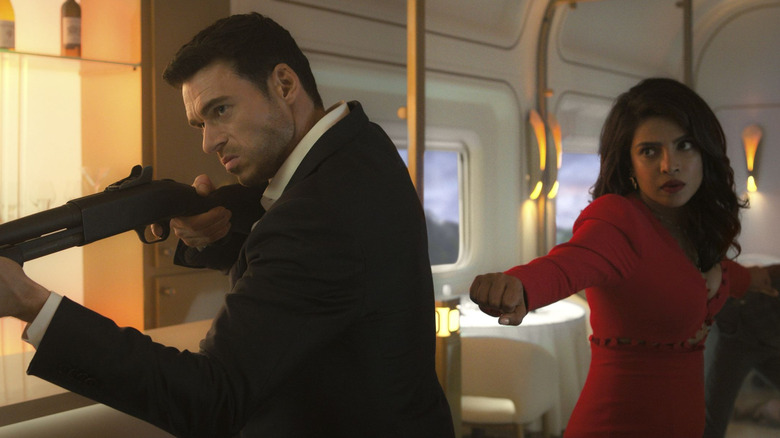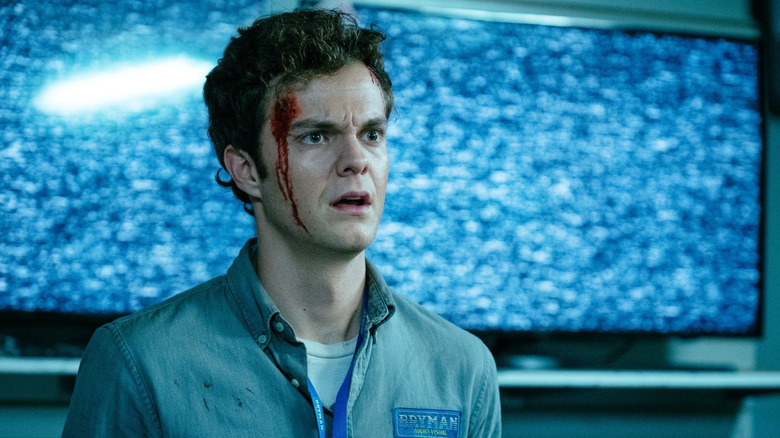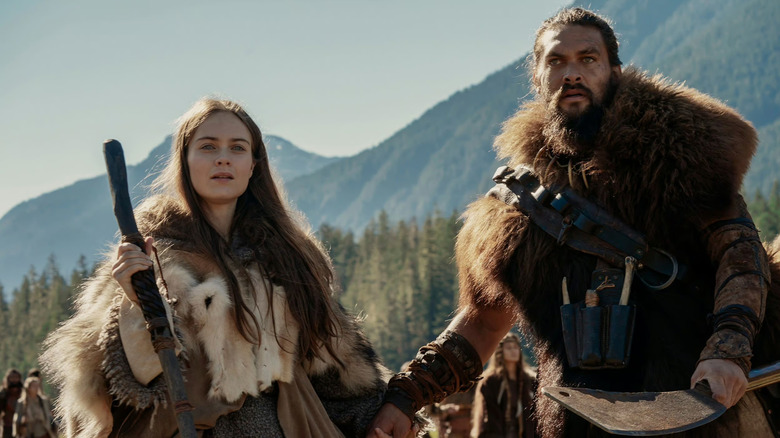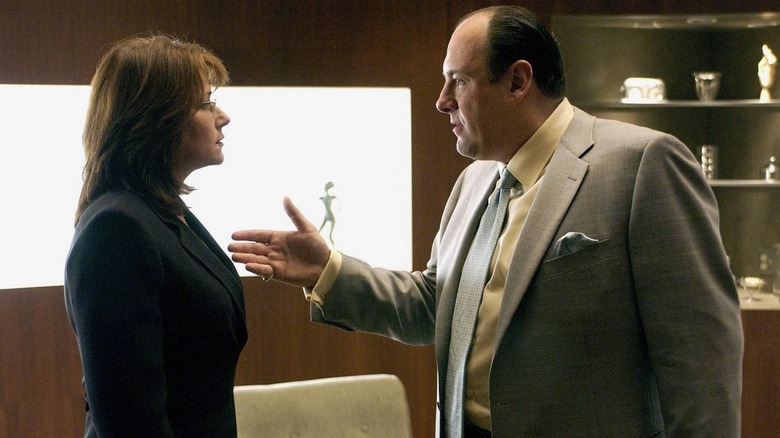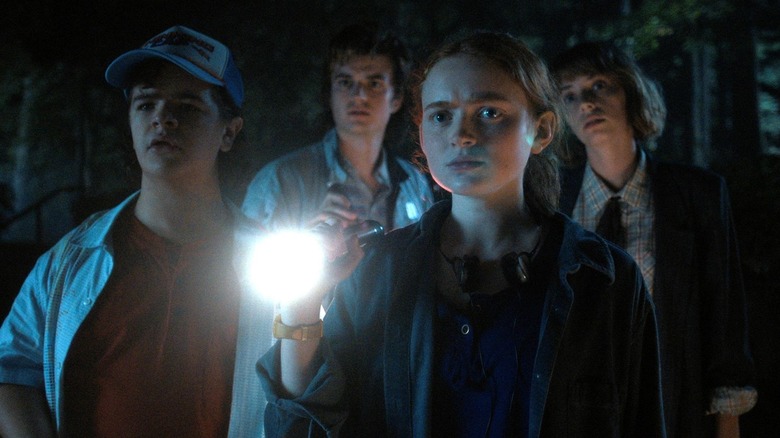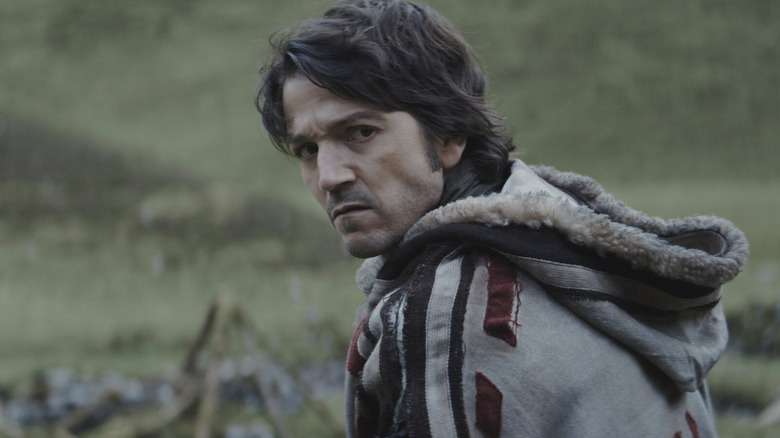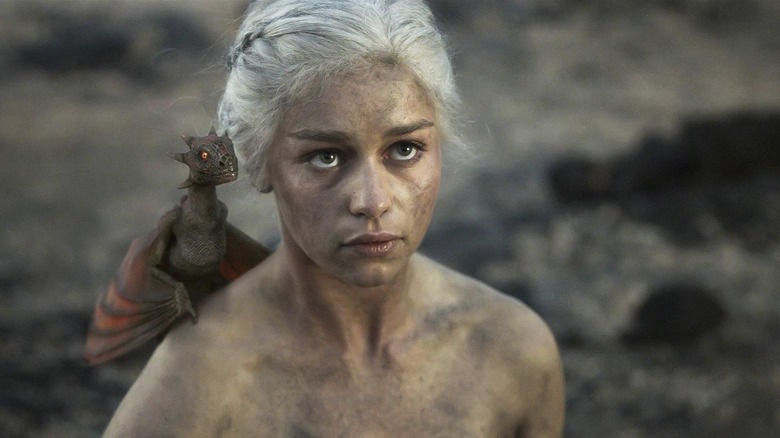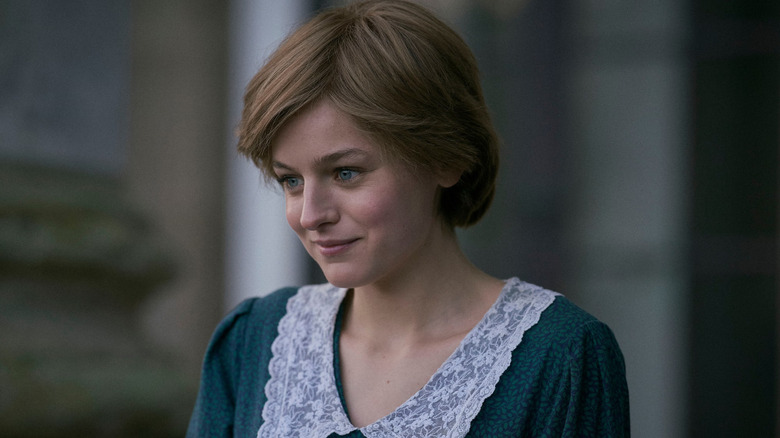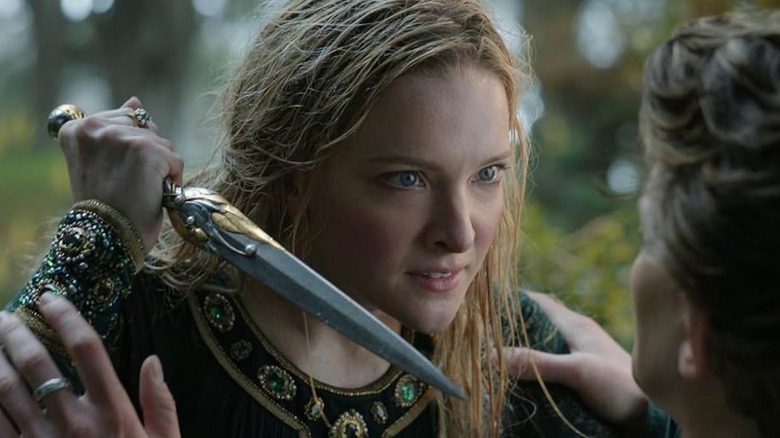15 Most Expensive TV Shows Of All Time
In recent years, television has transformed from the cheap alternative to theatrical film to a big-budget spectacle in its own right. Many prestige shows on TV right now not only feature A-list movie stars in prominent roles, but feature cinematic special effects, premium production design, and ambitious storytelling that makes the most recent Marvel movies look primitive by comparison. Some might argue this is ultimately a detriment to television as a medium, causing shows to take years to make in-between seasons, while some successful series are still able to find success without breaking the bank.
Either way, the 2000s have been rife with television shows that, when adjusted for inflation and accounting for the entire series' budget, are truly astronomically expensive. From globe-trotting action series to fully-fledged worlds painstakingly created for the small screen, these 15 shows are some of the most pricey that networks and streaming services have ever made. At the very least for some of them, they're also considered some of the greatest TV shows of all time, so maybe the cost was worth it.
Arcane
"Arcane" is the sole animated series on this list, though in some cases animation can be more expensive than live-action TV. "Arcane" is especially different considering it's set in the world of "League of Legends," one of the most popular MMOs of all time, but its greatest appeal is towards those who may be entirely unfamiliar with the video game. The series follows a class struggle between the upper class of Piltover and the lower class of Zaun, with sisters Violet (Hailee Steinfeld) and Jinx (Ella Purnell) caught on opposite sides of the conflict.
One of the reasons why Netflix canceled "Arcane" after two seasons was its incredibly high budget: it's the most expensive animated TV show of all time. Production costs for both seasons were roughly $250 million, with only 18 episodes to show for it (compared to other shows on this list with similar total budgets across more seasons). Obviously, "League of Legends" developer Riot Games doesn't have to sweat much considering how massive its player base is, but it didn't help that the show faced numerous production delays during the creation of both seasons.
WandaVision
Marvel Studios' TV ventures have been divisive, not just in terms of their quality but their price tags. 2023's critically-panned "Secret Invasion" had a cost of nearly $36 million per episode, but the most expensive Disney+ series in the MCU thus far is the very first one: "WandaVision," which premiered in 2021. The show finds Wanda Maximoff (Elizabeth Olsen) coping with the death of Vision (Paul Bettany) by creating a false reality for herself inspired by decades of TV sitcoms. Showrunner Jac Schaeffer and director Matt Shakman put effort in to make every episode authentic to each era parodied.
Reportedly, "WandaVision" was on par with 2021 shows "Loki" and "The Falcon & the Winter Soldier," costing $25 million per episode. But "WandaVision" also exceeds their length by three additional episodes, totaling roughly $260 million for the entire series. Thankfully, fans and critics felt that "WandaVision" was a charming departure from formula for the MCU, and it may be the only MCU series thus far to really take advantage of the medium of television.
Sense8
It shouldn't be too surprising that "Sense8" cost a pretty penny for Netflix to produce when you learn that it was created by Lana and Lilly Wachowski, the filmmaking duo responsible for creating the "Matrix" franchise. This sci-fi series follows a group of strangers from across the globe who discover they are mentally linked, allowing them to communicate and share skills with each other as they are hunted by an organization that seeks to rid the Earth of these types of humans, dubbed "sensates."
Just like "Arcane," Netflix canceled "Sense8" after two seasons, claiming the show's niche audience didn't justify its massive price tag. The budget for each episode of the first season was nearly $5 million, ballooning to $9 million per episode in season 2, for a series total of $270 million. After fan outcry for closure following the show's cliffhanger ending in the second season, Netflix produced an additional feature-length finale, albeit with a budget that's reportedly less than a previous season's worth of episodes. Hopefully, it was worth it for fans who desperately wanted the series to keep going.
His Dark Materials
"His Dark Materials" takes the coveted spot as the most expensive television series produced by the BBC, and for good reason. Its three seasons are an adaptation of a novel trilogy by Philip Pullman, and judging by most fans' responses to the series, it's the adaptation fans have been waiting for, perfectly capturing the novels' fantastical tone and rich world. The show follows Lyra (Daphne Keen), a young girl whose investigation into a series of disappearances puts her on a journey through multiple worlds where the souls of people are embodied by animal avatars.
Between its extensive CGI, its partnership with HBO for American distribution, and its all-star ensemble cast (including James McAvoy, Ruth Wilson, Lin-Manuel Miranda, and Phoebe Waller-Bridge), the first season of "His Dark Materials" reportedly cost the BBC upwards of $60 million, with a total series budget of over $280 million. The series also utilized puppets behind-the-scenes to help the actors not feel like they were performing opposite green tennis balls all the time, which was all on top of bringing these anthropomorphic avatars to life.
The Pacific
"The Pacific" is part two of a trilogy of HBO miniseries set during World War II and produced by the trio of Tom Hanks, Steven Spielberg, and Gary Goetzman, following the 2001 series "Band of Brothers." Released in 2010, "The Pacific" follows a regimen of American soldiers on the Pacific coast during the war, including recreations of the Battle of Guadalcanal, the Battle of Cape Gloucester, and Operation Iceberg in Okinawa. On top of its ambitious scope, it features an ensemble cast of up-and-comers in Hollywood, including future Oscar winner Rami Malek, "The Walking Dead" breakout Jon Bernthal, and "Mindhunter" and "The Last of Us" actress Anna Torv.
According to The Hollywood Reporter, HBO spent roughly $288 million in production costs (adjusting for inflation) on "The Pacific," making it (at the time) the most expensive miniseries ever produced. Thankfully, the cost paid off, as it's a worthy follow-up to "Band of Brothers." And, surprisingly, the show's executive producers claim its recreations of the bloodiest battles in World War II actually came in under budget.
The Witcher
It was almost inevitable, given the success of high fantasy on TV, that "The Witcher" would get the big-budget treatment. Netflix adapted the book series (which has already become a successful video game series) starting in 2019, following the adventures of cosmically-linked monster hunters Geralt of Rivia (Henry Cavill), Princess Ciri of Cintra (Freya Allan), and Yennefer of Vengerberg (Anya Chalotra). Thus far, "The Witcher" has had three seasons on Netflix and is already one of the most expensive TV shows ever made, totaling nearly $300 million for the first three seasons, with two more slated before it will come to an end.
However, "The Witcher" has also been hit with some production troubles now that Henry Cavill's exit from playing Geralt of Rivia has forced the showrunners to recast the role with Liam Hemsworth. If you also throw in the additional animated films and miniseries, "Nightmare of the Wolf," "Blood Origin," and "Sirens of the Deep," then "The Witcher" might possibly be one of the most expensive franchises on TV at the moment.
Citadel
There's not much about "Citadel" that seems like it warrants a production cost of $310 million for one season of six episodes — until you find out it's executive-produced by "Avengers: Infinity War" and "Endgame" directors Joe and Anthony Russo (the former also set to direct the entire second season). The Russo bros' spy series is a "Bourne" rip-off with no identity, essentially, starring Richard Madden and Priyanka Chopra as secret agents whose deaths are faked and memories wiped as they live a peaceful domestic life, only for their true identities to be revealed to them when their services are needed once again.
Obviously, Amazon is no stranger to spending quite a lot of money on streaming series, but putting $310 million on an original IP is still quite a surprising move. That doesn't even account for the production delays and behind-the-scenes turmoil that resulted in extensive reshoots, a change in showrunner, and the Russos creating a competing edit of the series that Amazon eventually chose to release. In addition, Amazon has produced a number of spin-offs of "Citadel" in other languages, ballooning the franchise's total cost to nearly $500 million.
The Boys
"The Boys" is based on a comic book series by Garth Ennis and Darick Robertson, following a world in which superheroes — particularly the elite Justice League-esque team "The Seven" — are deeply flawed individuals abusing their power and celebrity status, whilst a ragtag group of anti-heroes seek to keep them in check. "The Boys" debuted as a Prime Video series in 2019, and has continued on for four seasons and several spin-off series, with a final fifth season expected in 2026.
Packed with celebrity cameos and leaning into the darkness and complexity of other recent gritty superhero projects (i.e. the work of Zack Snyder or James Gunn), "The Boys" reportedly cost $11 million per episode in its first season, which has only expanded in later seasons as the show's scale has grown. Its entire run thus far has cost Amazon upwards of $352 million, which will likely increase for its climactic season.
See
Jason Momoa is a huge movie star, so it's not exactly surprising that his Apple TV+ series "See" had a tremendous budget. The show is set in a distant future where an apocalyptic pandemic has rendered humankind both primitive and genetically blind. The story follows a conflict between warring tribes, with Momoa playing Baba Voss, the leader of the Alkenny tribe who marries Maghra (Hera Hilmar) and adopts her children, who have the ability to see.
Although director Francis Lawrence believes reports are disproportionate to the truth, it's speculated that "See" costs Apple TV+ $15 million per episode, costing $240 million just for its first two seasons. After Momoa's Apple TV+ series ended with season 3 in 2022, it was said the entire cost of the show was $360 million. Whether the show really cost that much or not, it's still an incredibly expensive show that rivals prestige television titans that came before it, including a few key ones later on this list.
The Sopranos
"The Sopranos" is considered one of the greatest TV series of all time, but it might be surprising to some that it's also one of the most expensive. It had an estimated budget per episode of $2 million to $6 million. The show ran for six seasons from 1999 to 2007, but even judging by the most celebrated "Sopranos" episodes, there's not a lot to the show that would seem to necessitate such a high production cost.
One element that drove up the costs in later seasons was its star power: by 2003, Tony Soprano himself, James Gandolfini, was reportedly making $26 million per season. By today's monetary standards, "The Sopranos" cost HBO approximately $456 million, which was arguably worth it to establish HBO as a hotspot for prestige TV throughout the 21st century. At least the show was also successful enough to justify paying its lead actor such a high amount of money.
Stranger Things
2026 will mark ten years since the first season of "Stranger Things" premiered on Netflix, and we're only a few months away from the show's final episodes. With each new season the budget for "Stranger Things" has grown, between its need for extensive visual effects, production design, and of course, the demanding paychecks of its actors, some of whom have now been rocketed to the A-list. The first season reportedly cost Netflix $7 million an episode (between $50 million – $60 million for the entire season), but season 4 cost $30 million an episode (a total season cost of $270 million).
In total, "Stranger Things" thus far has cost Netflix over $500 million, but we can only imagine that number will balloon when season 5 hits Netflix. The actors have said that the eight episodes of season 5 will essentially all be feature-length, with filming lasting almost the entirety of 2024 from January to December. Assuming it's at least as expensive as season 4, the entire show's production cost (not even including spin-offs and other marketing) will stretch way beyond $700 million, possibly even to $800 million.
Andor
If we were to combine all the Disney+ "Star Wars" series into one slide, they'd probably outnumber every single other television show out there. The single season of "The Acolyte" surpassed many shows on this list with a total budget of $230 million, according to Forbes, and flagship series "The Mandalorian" has cost roughly $120 million per season. And yet, by far the "Star Wars" show with the highest budget is also the one with the least amount of aliens and lightsabers: "Andor."
"Andor" is considered by many "Star Wars'" best, boldest experiment, but it's also Lucasfilm's priciest at a total of $645 million for both of its seasons. For context, that's higher than any of the sequel trilogy films, but it might seem a little more reasonable when you factor in that "Andor" had 12 episodes a season, four more than each season of "The Mandalorian" had. Plus, it couldn't be cheap to give the Disney+ show easily the best production design in the entire sci-fi franchise, from the sprawling cityscape of Coruscant to the claustrophobic cells of Narkina 5.
Game of Thrones
"Game of Thrones" definitely belongs on this list; not only was it one of the biggest TV shows of all time when it aired, but it has since spawned a prequel series, "House of the Dragon," that within only two seasons has also rivaled many of the shows mentioned here. The first season had a high but fairly reasonable budget of $50 million, but as the show grew (as did Daenerys' dragons), the episodes themselves were $10 million to $15 million each. Although the final season had a truncated six total episodes, it reportedly doubled the budget of the first season.
In total, "Game of Thrones" alone cost HBO upwards of $700 million across eight seasons, but its prequel series, which features many more fully-grown CGI dragons than its predecessor ever did, already cost $200 million per season. It seems that even though the "Game of Thrones" finale was loathed by most fans, HBO is still willing to sink hundreds and hundreds of millions of dollars into more series about the world of Westeros. At least no one can say that high fantasy is going anywhere.
The Crown
"The Crown" was an ambitious project for Netflix, chronicling the majority of Queen Elizabeth II's reign in England, beginning in her young adulthood portrayed by Claire Foy, middle age by Olivia Colman, and later years by Imelda Staunton. In addition, the show featured plenty of prominent figures of English nobility in its revolving cast, including Princess Margaret (Vanessa Kirby, Helena Bonham Carter, and Lesley Manville), Winston Churchill (John Lithgow), Princess Diana (Emma Corrin and Elizabeth Debicki), and future king Charles (John O'Connor and Dominic West).
That stellar cast isn't the only thing "The Crown" spent its money on. One of the hardest parts of making "The Crown" is crafting the elaborately detailed costumes, sets, and visual effects, costing over $14 million per episode. Across its six seasons, the show spent nearly $130 million per season, totaling well over $780 million for its entire run. Some estimates even allege that the entirety of "The Crown" was worth more than the Queen herself, whose net worth was reportedly around $500 million in the 2020s.
The Lord of the Rings: The Rings of Power
The second Amazon announced they'd be making a "Lord of the Rings" television series to rival "Game of Thrones," you could expect it'd be one of the most expensive shows on TV. Peter Jackson's original film trilogy cost a total of $530 million (by 2024 standards), while his "The Hobbit" trilogy cost over $1 billion. And yet, from the get-go of Amazon's deal to produce "The Lord of the Rings: The Rings of Power," they were prepared for the entire endeavor to cost $1 billion dollars.
The show has thus far ran for two seasons, and Amazon has pretty much fulfilled that promise, with season 1 costing over $700 million and season 2 likely surpassing the $1 billion mark. Its total cost, adjusting for inflation, is likely upwards of $1,032,000, making it the most expensive television show by a couple hundred million dollars. We already know "The Rings of Power" season 3 is in production, and with no sign of it being the last, it might be a long, long time (if ever) that a show out-prices it.
